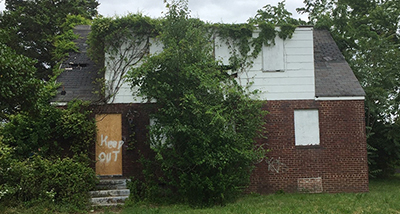
‘Zombie’ Properties Increase Amid Jump in Foreclosure Activity

ATTOM, Irvine, Calif., said residential properties in the process of foreclosure rose by nearly 13 percent in the second quarter and by nearly 16 percent from a year ago.
The company’s quarterly Vacant Property and Zombie Foreclosure Report estimated 1.3 million residential properties in the United States sit vacant, representing 1.3 percent, or one in 76 homes, across the nation.
The report said 259,166 residential properties in the U.S. are in the process of foreclosure in the second quarter of this year, up 12.7 percent from the first quarter and up 15.9 percent from a year ago, marking the third straight quarter of increases since a nationwide foreclosure moratorium, imposed early during the Coronavirus pandemic, was lifted at the end of July 2021.
Among those pre-foreclosure properties, 7,569 sit vacant in the second quarter, a 2.8 percent increase.
“The incidence of zombie-foreclosures tends to be higher in cases where the foreclosure process has dragged on for many months and sometimes even for years,” said Rick Sharga, executive vice president of market intelligence at ATTOM. “We’re now seeing properties where the borrower was already in default prior to the government’s moratorium re-enter the foreclosure process, and undoubtedly some of these homes will have been vacated over the past 26 months.”
The report noted the number of zombie-foreclosures does remain down 6.3 percent from a year ago and continues to represent just a tiny segment of the nation’s total stock of 99.7 million residential properties. Just one of every 13,171 homes in the second quarter of 2022 are vacant and in foreclosure, meaning that most neighborhoods have none. The portion of pre-foreclosure properties that have been abandoned into zombie status also continues to decline, down from 3.6 percent a year ago to 3.2 percent in the first quarter of 2022 and 2.9 percent in the second quarter of this year.
But Sharga said the recent increase in zombie properties is the first since the moratorium ended. The portion of all residential properties sitting empty in the foreclosure process has grown 1.9 percent in the second quarter, up from one in 13,424 in the first quarter of this year. The upward second-quarter foreclosure trends – in both overall and zombie-property counts – add to a list of measures showing how the decade-long U.S. housing market boom remains strong but also faces a possible slowdown this year.
Median single-family home prices have shot up 17 percent over the past year and typical home-seller profits remain historically high, at nearly 50 percent. Homeowner equity continues rising, greatly limiting the likelihood that homeowners facing foreclosure will simply walk away from their homes.
“[Nearly] 90 percent of homeowners in foreclosure have positive equity,” Sharga said. “Having equity gives financially-distressed homeowners an opportunity for a relatively soft landing – selling their home at a profit rather than losing everything to a foreclosure. That factor alone should keep the number of zombie-foreclosures from rising too much.”
The report said 7,569 residential properties facing possible foreclosure have been vacated by their owners nationwide in the second quarter, up slightly from 7,363 in the first quarter but still down from up from 8,078 a year ago.
